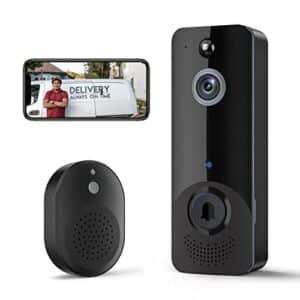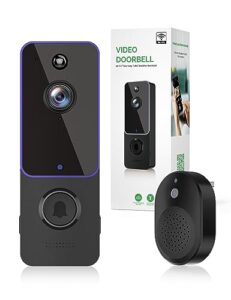How Do Smart Doorbells Work?
Key Takeaways
- Smart doorbells detect motion using passive infrared (PIR) sensors or camera-based motion detection systems.
- Smart doorbells capture video footage of detected motion using a built-in camera with high-definition resolution, storing it locally or in the cloud.
- Smart doorbells send notifications and alerts to the homeowner’s smartphone or connected devices, allowing them to view the video footage in real-time and communicate with visitors using two-way audio.
Smart doorbells have revolutionized home security by providing homeowners with the ability to monitor their front doors remotely. But how do these devices actually work? In this article, we will explore the technology behind smart doorbells and how they detect motion, capture video, and send notifications.
Motion Detection
One of the key features of smart doorbells is their ability to detect motion. This allows them to notify homeowners when someone approaches their front door. Smart doorbells use a variety of technologies for motion detection, including passive infrared (PIR) sensors and camera-based motion detection systems.
PIR sensors work by detecting changes in heat patterns within their field of view. When an object or person moves within range of the sensor, it senses the change in temperature and triggers a motion event. This event can then be used to send notifications to a smartphone or activate the doorbell’s receiver indoors.
Camera-based motion detection systems, on the other hand, use advanced algorithms to analyze video footage and identify motion. These systems are typically more sophisticated and can provide more accurate motion detection. They can also be customized to ignore certain types of motion, such as cars passing by or tree branches swaying in the wind.
Video Capture
Once motion is detected, smart doorbells can capture video footage of the event. This is typically done using a built-in camera with high-definition resolution. The camera records the video and stores it either locally on the device or in the cloud, depending on the model of the smart doorbell.
Cloud storage is a popular option as it allows homeowners to access their video footage from anywhere using a smartphone or computer. It also provides a backup in case the device is stolen or damaged. However, some smart doorbells may require a subscription for cloud storage, so it’s important to check the model’s specifications.
Notifications and Alerts
When motion is detected and video footage is captured, smart doorbells can send notifications and alerts to the homeowner’s smartphone or other connected devices. These notifications can be in the form of push notifications, email alerts, or even text messages.
Homeowners can then view the video footage in real-time or access the recorded footage later. This allows them to see who is at the door, even when they are not at home. Some smart doorbells also offer two-way audio, allowing homeowners to communicate with visitors through the doorbell’s built-in speaker and microphone.
Conclusion
Smart doorbells have revolutionized home security by providing homeowners with a convenient way to monitor their front doors remotely. They use a combination of motion detection, video capture, and notifications to keep homeowners informed and in control of their home’s security.
Whether you choose a smart doorbell with PIR sensors or a camera-based motion detection system, these devices offer a secure and convenient way to monitor your front door. Just remember to check the specifications and features of each model to ensure it meets your specific needs.
Related Websites:
FAQs:
Q: What is a smart doorbell and how does it work?
A smart doorbell is a device that allows you to see and communicate with visitors at your door using your smartphone. It typically consists of a camera, microphone, speaker, and wireless connectivity. When someone rings the doorbell or triggers the motion sensors, the camera captures video and audio, which is then transmitted to your smartphone via a mobile app.
Q: What are the benefits of wireless connectivity in smart doorbells?
Wireless connectivity, typically through Wi-Fi, enables smart features in doorbells. It allows you to remotely access and control the doorbell from your smartphone, receive real-time notifications when someone is at your door, and view recorded footage. Wireless connectivity also eliminates the need for complicated wiring during installation.
Q: What video and audio features should I consider when choosing a smart doorbell?
Resolution, frame rate, and field of view are important considerations for video quality. Higher resolution provides clearer images, while a higher frame rate ensures smoother video playback. A wider field of view allows for a larger coverage area. Two-way audio communication is also a valuable feature, allowing you to speak with visitors through the doorbell.
Q: How do smart doorbells detect motion and deliver notifications?
Smart doorbells use motion sensors to detect movement near your door. Different models offer basic or advanced motion detection, with advanced options allowing you to set specific zones or customize sensitivity. When motion is detected, the doorbell sends notifications to your smartphone, alerting you of any activity.
Q: Can smart doorbells be integrated with existing home security systems?
Yes, smart doorbells can be integrated with existing home security systems. This allows you to have a comprehensive security setup, where the doorbell acts as an additional layer of protection. Benefits of integration include seamless monitoring and control of all security components through a single interface.






